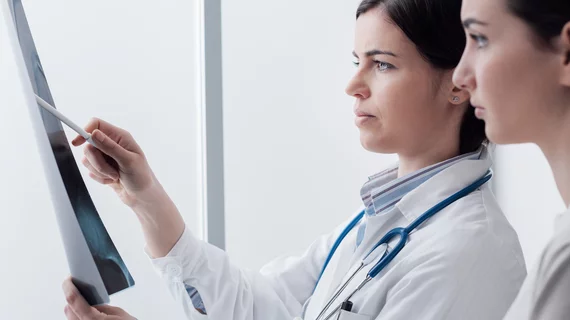Risk-based triage can help radiologists prioritize mammograms during emergency situations
Radiology departments continue to face challenges stemming from the pandemic, including imaging backlogs, reduced staff and working within safety protocols. But new research suggests using a risk-based approach to triage exams can help practices cope during these emergency situations.
A study published just last week found organizations adapted quickly to reinstate cancer imaging during the pandemic’s peak, but screening rates for services such as mammography still plummeted about 96%. And some experts say this drop may have missed up to 1,400 cancers at one institution alone.
Authors of a study published Thursday suggest their risk-based algorithm, which incorporates clinical indication, breast symptoms, and cancer history and age, may have mitigated some of those early challenges for radiologists.
In fact, after analyzing nearly 2 million mammograms from more than 90 radiology centers, the group found that 12% of exams with “very high” and “high” cancer detection rates made up more than half of all cancers. And 44% of mammograms with “very low” detection rates accounted for a little more than 10% of all diseases, they explained March 25 JAMA Network Open.
“What this means is that triaging individuals most likely to have cancer during periods of reduced capacity may be effective at detecting the most cancers with the fewest mammograms versus using a non- risk-based approach,” Diana L. Miglioretti, PhD, professor and division chief of biostatistics at the UC Davis Department of Public Health Sciences, said in a statement.
Miglioretti, who is also an affiliate investigator with Kaiser Permanente Washington Health Research, and colleagues noted that while COVID-19 has undoubtedly wreaked havoc around the world, it has also afforded researchers a unique opportunity to develop new lifesaving techniques.
The group’s own findings came after looking at nearly 900,000 patients and 2 million exams in the national Breast Cancer Surveillance Consortium performed between 2014 and 2019.
In addition to crises, Miglioretti et al. said clinicians may use their results to counsel patients about how urgently they should undergo breast imaging.
But given continued waves of COVID-19 cases, the researchers warned both patients and providers cannot lose sight of the current situation.
“Whether it is due to unexpected new surges in COVID-19 cases prompting new lockdowns or other emergencies such as cyberattacks or natural disasters like wildfires, the study results provide important guidance for navigating through any crisis that could impact the availability of mammograms,” Miglioretti added.

